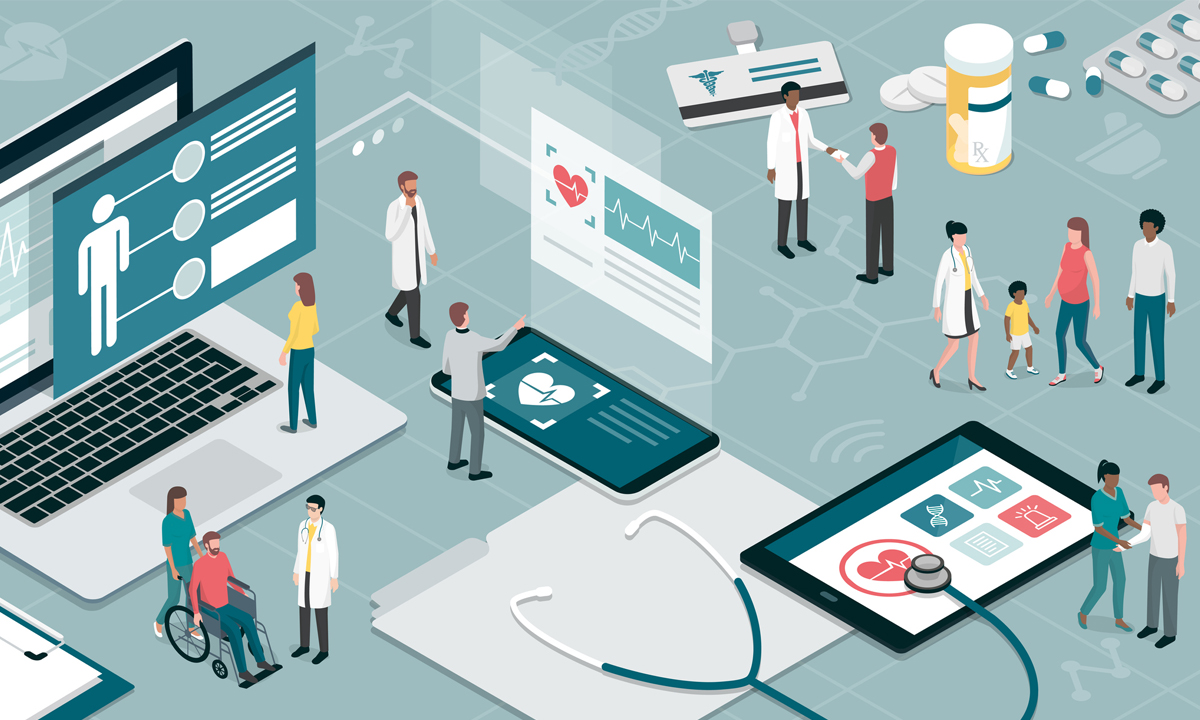
The health care field has rapidly been transforming over the last decade. As the use of information technology continues to evolve and the emphasis shifts from increasing patient volume to providing value-based care and ensuring patient satisfaction, health care clinicians who aspire to management roles must come to the table armed with a new set of skills to effectively support the patient journey.
The Role of Clinical Operations Leaders
“In this complex environment, the need for formal training in operational aspects of health care has never been more critical,” says J. Kevin Tucker, MD, Medical Director of DCI Brigham/Faulkner Dialysis Clinic and Program Director of Harvard University’s new Master’s in Clinical Service Operations (MCSO), which is a one-year program launching in September 2019 to equip a new generation of leaders to keep pace with the tumultuous health care landscape. “Clinical operations really drive the revenue and patient experience today,” Tucker stresses. This makes it essential that leaders, including clinicians, nurses, allied health professionals, and administrators, are well-versed in the latest trends that impact all aspects of health systems today and that they know how to address them effectively.
Four Trends Influencing Today’s Health Care Marketplace
“Clinical operations functions exist in almost every sector of health care,” points out Mara Bloom, JD, MS, Executive Director of the Massachusetts General Hospital Cancer Center, who serves as the Co-Director of MCSO. “If you think about mapping the patient journey and all of the clinical operations that administrators may need to navigate, it’s a very wide spectrum of areas that they will touch on in the course of the day,” she says.
Both Bloom and Tucker agree that there are four key trends influencing the current health care environment that anyone with clinical operations aspirations needs to understand and integrate into their knowledge base.
Trend #1: The Move to Multi-disciplinary Teams and Service Lines
One of the biggest transformations over the past twenty years is that health care service lines have become more multidisciplinary, according to Tucker, who points out that this means that leaders need to know how to pull together a team and work collaboratively—often cutting across silos—toward a common goal.
“It’s no longer just about your unit, but now it’s really about having a broader system of care,” Bloom says. For instance, she points out that at Massachusetts General Hospital’s Cancer Center, where a new building project is under way, people from all of the departments are sitting at the same table and developing a common vision to explore what the future will look like for the organization. “Collaboration is hard. When you have more people, you need more consensus building, so leaders need to have some strong skills in this area,” she says. In return for the effort, the payoff can be a more developed response that can lead to increased efficiency and better outcomes, she adds.
Trend #2: IT Advances Are Changing Care Delivery
Information technology has also taken off in the past decade, underpinning the “DNA” of every health care operation. For instance, Tucker points out that organizations today are relying on electronic medical records to capture information, while Artificial Intelligence (AI) is leading to improved diagnostics and helping to care for the health of populations, and telemedicine is extending the reach of medicine to remote areas.
All of these changes are impacting the daily flow in health systems and need to be carefully managed by clinical operations leaders who understand the potential of using big data to drive their decisions. Leaders also need to understand the risks involved in using technology and need to take important steps to ensure regulatory compliance and prevent privacy breeches.
“Leaders need to ask themselves how best to manage the changes and what the tools and skills are that they need to leverage this access,” Bloom says.
Trend #3: Shifting from Inpatient Care to Outpatient Services
The delivery of care is rapidly moving from inside the hospital walls, where it’s been traditionally, to outpatient settings. This means that clinicians today need to understand ambulatory operations from a variety of standpoints. For instance, they should be familiar with the latest entry points, such as retail clinics, urgent care centers, and virtual exams, as well as opportunities for remote monitoring and diagnosis right in people’s own homes. They also need to recognize the value of bringing care right into the community to increase access for high-risk populations. As services move to other settings, leaders must also think about how they can flex now-unneeded inpatient space.
Trend #4: Putting the Patient Experience at the Center
Today, more than ever before, consumers are shouldering an increasingly larger portion of the financial responsibility for their medical care. This is empowering them to choose health care settings and providers who meet their high standards. This means that health care organizations need to treat patients like consumers and go to great lengths to earn their business. “In the real world, patient experience is king. Patients want efficient, compassionate care and they will vote with their feet,” Bloom explains.
For people working in clinical operations, then, it’s essential to view the services they are providing from the patient’s perspective. With health systems competing for business, the care you provide must be convenient and easy to access for patients. In addition, with people looking online to read patient reviews about providers and facilities, leaders need to know what patients and families say about their facilities and see how this can impact their revenues. Fostering patient engagement, offering price transparency, ensuring clear communication, and responding to patient feedback are just a few of the factors Tucker points out are essential to being an effective clinical operations leader today.
Keeping Sight of the Bigger Picture
While any one of these pieces can be complex, today’s leaders must keep an eye on the bigger picture and see how they all connect together. “Clinical operation experts need to be thinking about the whole enterprise,” Bloom says. “They need to start with the beginning of the patient journey, when people first pick up the phone to schedule an appointment, and then support people through all of the critical times in all of the aspects of care, including wellness, or dying,” she says.
Tucker adds that by taking advantage of programs such as Harvard’s Master’s in Clinical Service Operations, leaders can get strengthen their skills so they can position themselves for success as the health care field continues moving forward.
Written by Lisa D. Ellis
-
Resources
- Daum, Kevin. “8 Things Really Great Problem Solvers Do.” Inc.com, Inc., 3 Sept. 2014, www.inc.com/kevin-daum/8-things-really-great-problem-solvers-do.html.
- “Summary.” U.S. Bureau of Labor Statistics, U.S. Bureau of Labor Statistics, 13 Apr. 2018, www.bls.gov/ooh/management/medical-and-health-services-managers.htm.
- “Top 5 Skills and Qualifications for Health Services Administration.” Monster Career Advice, www.monster.com/healthcare/a/Top-5-Skills-and-Qualifications-for-Health-Services-Administration.
- “What Skills Are Needed of Healthcare Leaders in an Era of Value-Based Care?: When the Overarching Metrics of an Organization Move from Fairly Straightforward, Cost vs. Revenue Goals, to More Complex Goals of Keeping a Population Healthy and Properly Pricing Risk-Based Contracts and Products, Leadership Requirements Change.” Becker's Hospital Review, www.beckershospitalreview.com/healthcare-blog/what-skills-are-needed-of-healthcare-leaders-in-an-era-of-value-based-care.html


